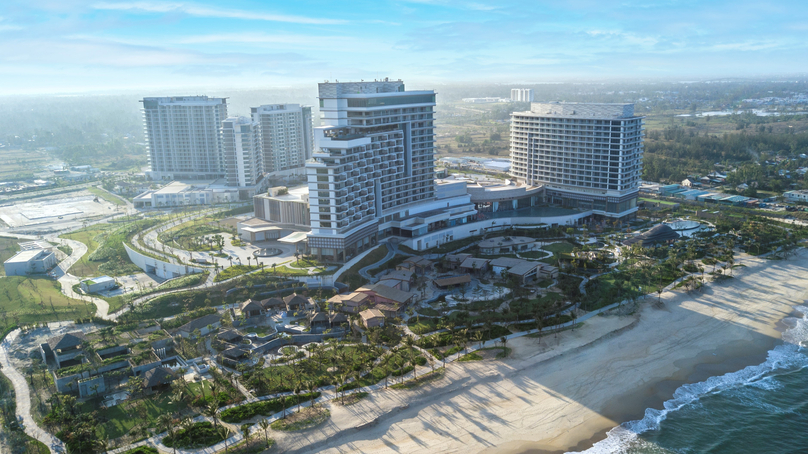China's opening up a long-awaited opportunity for Vietnam tourism market
Vietnam has been included on an outbound list for Chinese tour groups. The Investor talked with Steve Wolstenholme, president and CEO of South Hoi An Ltd (Hoiana Resort & Golf) about the market prospects following this move.
The Chinese government recently added Vietnam to its outbound list for Chinese tour groups, effective from March 15. How significant is the move to Vietnam's tourism industry?
This is a positive signal for Vietnam's tourism industry in general and Hoiana in particular.
In 2019, a year before the outbreak of the pandemic, China was Vietnam's largest foreign tourism market with 5.5 million visitors, accounting for nearly a third of the total number of international visitors. Of this, there were about 650,000 Chinese tourists visiting the central region through Da Nang International Airport.
This year, if the number of Chinese tourists recovers to about 70%, the Hue-Da Nang-Quang Nam area will welcome about 455,000 Chinese tourists. This is a good number for tourism businesses.
As one of the biggest tourism businesses in central Vietnam, what have you prepared to welcome back Chinese tourists?
Hoiana Resort & Golf is totally ready to welcome back Chinese guests. We have promoted connection and cooperation with several big travel agencies and partners in China as well as strengthen advertising activities on specialized channels for this market, such as Ctrip.com and Wechat.
In terms of personnel and workforce, Hoiana has conducted several recruitment events since international tourism resumed in March last year. We have about 2,000 employees, of whom many managers and customers service staff can communicate fluently in Chinese.
Hoiana Resort & Golf also focuses on diversifying our products and services, especially services for high-class guests. Recently, we have opened three more restaurants, including one that specializes in Chinese cuisine.

Hoiana Resort & Golf in Quang Nam province, central Vietnam. Photo courtesy of Hoiana.
What would be the attractiveness of Hoiana Resort & Golf in the eyes of Chinese tourists?
The South Hoi An area has a geographical advantage as it is located right next to famous tourist attractions such as the Hoi An ancient town and Bay Mau Coconut Forest, while still retaining its pristine natural surroundings.
This area has great potential to become a satellite destination revolving around famous destinations, providing a wider variety of leisure tourism products such as luxury resorts, theme parks, golf courses and gaming centres. Tourists will have more choices and more opportunities to spend money.
Hoiana Resort & Golf has all the factors to attract international visitors. Located next to the beautiful 4km long coastline, Hoiana has four luxury hotels managed by Rosewood Hotel Group (Hoiana Hotel & Suites, New World Hoiana and upcoming New World Hoiana Beach Resort and Rosewood Hoi An), an 18-hole golf course, and a casino with cutting-edge equipment. At Hoiana, visitors will have opportunities to enjoy high-class services and the most diverse experiences.
Chinese tourists have been absent in Vietnam for a long time. What difficulties did your business face?
Hoiana Resort & Golf has many products and services suitable for Chinese customers. Without this major market, it was difficult to our business targets.
However, during that time, Hoiana was flexible in its business and promotion strategies, targeting other markets such as South Korea, Japan and Southeast Asia.
What should the government and businesses do to exploit the Chinese tourist market?
I always appreciate the efforts of government agencies and believe that they have made great efforts to promote Vietnam's tourism market and support businesses.
To ultilize the international market, including China, we still have a long way to go and need cooperation of both the government and enterperises.
In my opinion, we need to increase tourism numbers and the expenditure per visitor, as well as return times and duration per stay. Diversifying luxury entertainment and accommodation will facilitate these goals.




